
computerتعلم صيانة الحاسوب
- Subject:
- Career and Technical Education
- Material Type:
- Student Guide
- Author:
- دعاء الورافي
- Date Added:
- 02/09/2023

computerتعلم صيانة الحاسوب

computerتعلم صيانة الحاسوب

Should A+ Certification Exam candidates use brain dump sites? My answer, might surprise you.
This is part of Mr. Ford's Guide to the A+ Certification Exam: How to Be A Computer Technician.
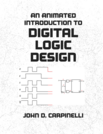
This book is designed for use in an introductory course on digital logic design, typically offered in computer engineering, electrical engineering, computer science, and other related programs. Such a course is usually offered at the sophomore level. This book makes extensive use of animation to illustrate the flow of data within a digital system and to step through some of the procedures used to design and optimize digital circuits.
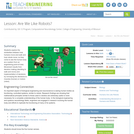
This lesson explores the similarities between how a human being moves/walks and how a robot moves. This allows students to see the human body as a system, i.e., from the perspective of an engineer. It shows how movement results from (i) decision making, i.e., deciding to walk and move, and (ii) implementing the decision by conveying the decision to the muscle (human) or motor (robot).
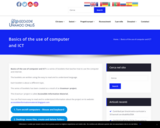
An handbook about the basics of the use of computer and ICT in 14 modules written in easy to read and to understand language: a useful tool for adult learners with low literacy skills (people with learning disability, migrants, elderly people) who want to learn about how to use the computer and internet. The manual can be used as teaching material by the educators who are planning to organize an ICT class for their users, but it could also be used as a step by step guide by the learners independently.
Below are listed the 14 modules that compose the handbook:
1. Turn on/off computers – Mouse and keyboard 2. Desktop: move files, create and delete folders 3. Accessibility features – Keyboard shortcuts 4. USB memory 5. Microsoft Word 6. Video Editor 7. Digital safety 8. Google Chrome 9. Google Maps 10. YouTube 11. Gmail 12. Facebook and Messenger 13. Pixlr X 14. Curriculum Vitae Europass
The manual is available even in Italian, Estonian, Lithuanian, Potuguese, Spanish and Polish language.
The Manual “Basics of the use of computer and ICT” has been created as a result of the Erasmus+ project Accessible Information Material.
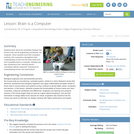
Students learn about the similarities between the human brain and its engineering counterpart, the computer. Since students work with computers routinely, this comparison strengthens their understanding of both how the brain works and how it parallels that of a computer. Students are also introduced to the "stimulus-sensor-coordinator-effector-response" framework for understanding human and robot actions.
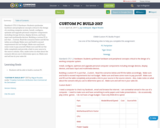
Standard: CTS 1.2 Hardware: Students synthesize hardware and peripheral concepts critical to the design of a working computer system.
Install, configure, optimize and upgrade personal computer components including storage devices, display devices, and basic input and multimedia devices.
Building a custom PC is just that …Custom. Read the scenarios below and fill the tables accordingly. Make sure and build to exceed requirements but not budget. Make sure and leave some room to pay yourself. Make sure and fill out the table completely and provide a link to your source in the source column. Also, make notes on what about the scenario did you use to determine specs on. Make sure and sell me in your sales bit
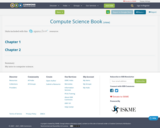
My intro to computer science.
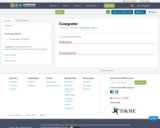
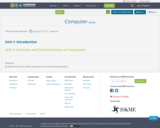
An Electronic Device where raw data is converted into information.
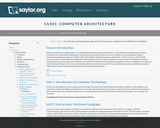
The purpose of this course is to cultivate an understanding of modern computing technology through an in-depth study of the interface between hardware and software. The student will study the history of modern computing technology before learning about modern computer architecture, then the recent switch from sequential processing to parallel processing. Upon completion of this course, students will be able to: identify important advances that have taken place in the history of modern computing and discuss some of the latest trends in computing industry; explain how programs written in high-level programming language, such as C or Java, can be translated into the language of the hardware; describe the interface between hardware and software and explain how software instructs hardware to accomplish desired functions; demonstrate an understanding of the process of carrying out sequential logic design; demonstrate an understanding of computer arithmetic hardware blocks and floating point representation; explain how a hardware programming language is executed on hardware and how hardware and software design affect performance; demonstrate an understanding of the factors that determine the performance of a program; demonstrate an understanding of the techniques that designers use to improve the performance of programs running on hardware; demonstrate an understanding of the importance of memory hierarchy in computer design and explain how memory design impacts overall hardware performance; demonstrate an understanding of storage and I/O devices, their performance measurement, and redundant array of inexpensive disks (more commonly referred to by the acronym RAID) technology; list the reasons for and the consequences of the recent switch from sequential processing to parallel processing in hardware manufacture and explain the basics of parallel programming. (Computer Science 301)
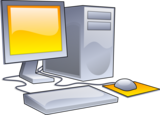
For this 3-part project, students will practice using the problem-solving steps by pretending to help a family member or friend who has asked them to give a recommendation of which computer to buy.
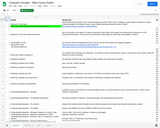
This is the lesson plan for my college level, semester long, computer concepts course. Here's the course description ...
You are about to embark on an exciting journey learning about the information revolution and the incredible world of computers.
This course is very practical and applicable. It focuses on teaching you skills you can use. These skills include not only specific hands-on skills, like "right-clicking" and taking "screenshots," but also skills such as keeping yourself safe online, not texting while you're driving, and what to look for when buying computers (just to mention a very small fraction of the skills this course will teach you).
This is a university level course designed to introduce individuals to the world of computers, so it is rich in its depth and breadth of content. I have taught this course for over a decade and have refined it to be incredibly amazing and awesome. You are going to love this course and it will forever change your life. You will gain skills in this course which you will use for the rest of your life and which will make your life easier. Knowing how to use computers is essential in our day-and-age. This course will give you the skills you need to use computers well.
Presented with high-quality video lectures, this course will visually show you how to easily do everything with computers. This is just some of what you will learn in this course:
Learn the basic principles of hardware including circuits, coding schemes, binary, the five generations of computers, Moore's Law, IPOS, registers, cache, RAM, magnetic storage, optical storage, solid-state storage, ROM, BIOS, the motherboard, buses, and the CPU.
Learn how to operate a computer including a vast array of hands-on skills – just to mention a few for example: managing files, backing –up files, right clicking, taking screenshots, determining your computer’s properties, upgrading your computer, changing settings on your computer.
Learn how to use word processing software including the creation of a title page, document sections, headers and footers, styles, an automatically generated table of contents, the insertion of images, references, and the insertion of an automatically generated citation of works referenced.
Learn how to use spreadsheet software including formulas, functions, relative references, absolute references, mixed references, and the creation of a graph or chart.
Learn how to use video editing software including adding credits and transitions then publishing that video to a video hosting website such as YouTube.
Learn how to use databases including table creation, the setting of a primary key, the establishment of table relationships, the setting of referential integrity, and the creation and execution of a query.
Learn how to use presentation software to more effectively give presentations.
Learn to do some simple programing including designing, coding, testing, debugging, and running a program.
Learn about the world wide web including sending email, conducting searches , having familiarity with online educational resources such as Khan Academy, and having an awareness of online "cloud computing" tools such as Google Word Processing, Google Spreadsheets, and the many other online tools offered by Google.
Learn about application software and system software including operating systems, utilities, and drivers.
Learn about networks including architecture, topology, firewalls, security, wireless networks, and securing wireless networks.
Learn about the Internet, the World Wide Web, censorship, the digital divide, net neutrality, differing legal jurisdictions, website creation, multimedia, social media, and eCommerce.
Learn about information systems, systems development, and the systems development life cycle.
Learn about program development, programming languages, and the program development life cycle.
Learn about databases including table creation, primary keys, relationships, referential integrity, queries, and structured query language.
Learn about privacy and security issues related to computers.
Learn about robots and artificial intelligence including the Turing test.
Learn about intellectual property including patents, trademarks, copyrights, and the creative commons.
Learn about ethics and ethical issues relating to the use of technology.
Learn about health ramifications of using computers including repetitive stress injury, carpal tunnel syndrome, and ergonomics.
Learn about e-Waste and other environmental concerns related to technology.
Lifetime access to this course allows you to easily review material and continue learning new material.
After taking this course, you will have a thorough understanding of how to use computers well.
From beginners, to advanced users, this course is perfect for all ability levels. This course will add value to everyone's skillset.

How does the global network infrastructure work and what are the design principles on which it is based? In what ways are these design principles compromised in practice? How do we make it work better in today's world? How do we ensure that it will work well in the future in the face of rapidly growing scale and heterogeneity? And how should Internet applications be written, so they can obtain the best possible performance both for themselves and for others using the infrastructure? These are some issues that are grappled with in this course. The course will focus on the design, implementation, analysis, and evaluation of large-scale networked systems.
Topics include internetworking philosophies, unicast and multicast routing, congestion control, network quality of service, mobile networking, router architectures, network-aware applications, content dissemination systems, network security, and performance issues. Material for the course will be drawn from research papers, industry white papers, and Internet RFCs.

https://padlet.com/sucharithagamage/e4qrx98svhmk77zw- https://edpuzzle.com/media/60ba2afaae423141745fd4f2- https://edpuzzle.com/media/60ba387144df25416a6e8dd...
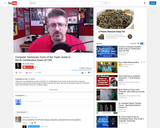
Video 4 in our Introduction to the CompTIA A+ Certification Exam looks at the tools the computer technician should have in their bag in order to get the job done. We look at hardware tools for computer repair and software tools for computer repair.
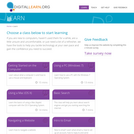
Digital Learn is a website with a variety of tutorials for adults who are new to using computers (on topics such as introduction to email, navigating a website, and online job searching).
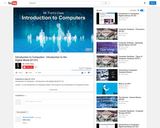
Our first lesson in our FREE Introduction to Computers/ Business Computers Information Systems (BCIS) course.
This video will introduce new students to this series and what they can expect.
Our first lesson in our FREE Introduction to Computers/ Business Computers Information Systems (BCIS) course.
This video will introduce new students to this series and what they can expect.
Our first lesson in our FREE Introduction to Computers/ Business Computers Information Systems (BCIS) course.
This video will introduce new students to this series and what they can expect.
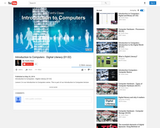
Our second video in the free Introduction to Computer series. This video defines and examines what digital literacy means. We also look at why it is important.